Introduction
Socks are knitted in the barrel of a sock machine in a loop. A point on each loop is a stitch, so the number of stitches in a loop is the number of stitches in that sock. Usually, we use Needle (N) to tell the number of stitches, in short, the needle of a sock is the stitching amount of this sock. Then how would the needle affect a sock, see below.
Common needles of socks
The standard needle for socks is 48N, 56N, 72N, 84N, 96N, 108N, 120N, 132N, 144N, 168N, 170N, 176N, and 200N. Some of these are single needles, and some are double needles. Single-needle socks are more common because of the ability to make complex patterns. There are two easy ways to distinguish between single and double-needle socks. One is to turn the sock over and look at the cuff part, if it is the same as the front of the sock, it is double-needle, if it is not and a stitching line appears, it is a single-needle sock. The second is that a double-needle sock is a single-layer cuff, while a single-needle sock is a double-layer cuff. Below are photos for your reference.
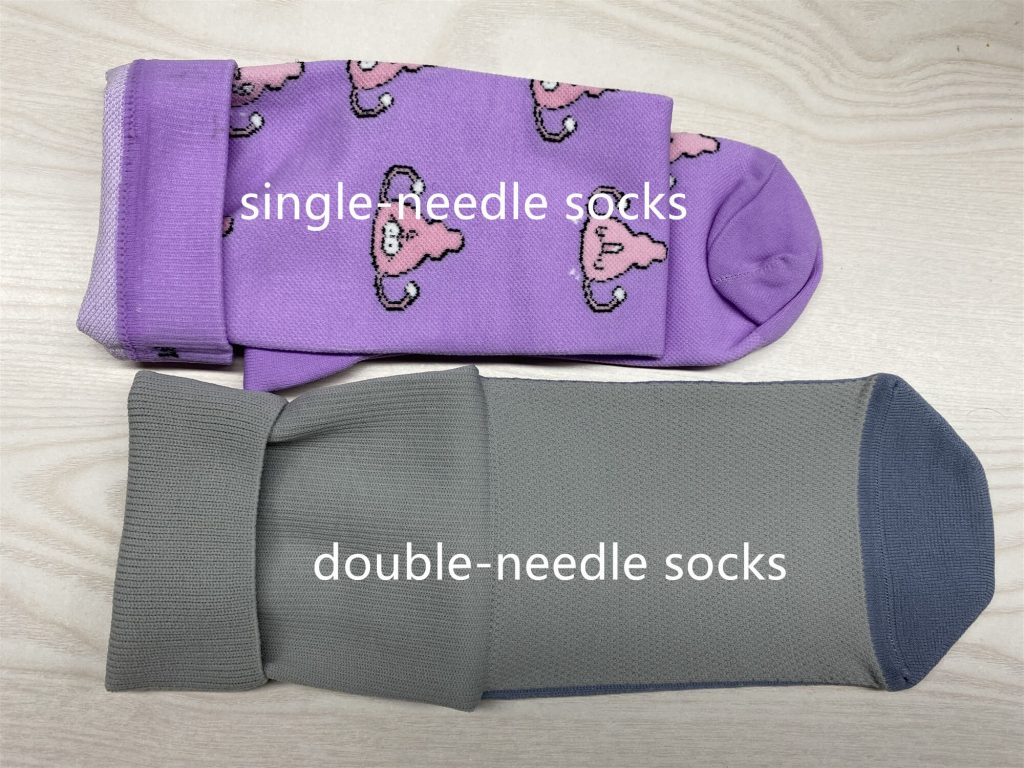
In particular, for single needle socks and our compression socks, the common needles are 144N, 168N and 200N. Our factory also has 220, 260 and 320N for the extra-large group of people, some of which are medical sock machines.
How to figure out socks needle
In order to figure out the needle in a sock, you must first understand what the needle looks like. Take a single needle sock as an example, the picture below shows the pattern made on the computer design, the red mark in the picture is one stitch on the design, which means on the needle on the socks. To identify easily, we can count the number of stitches in a loop by taking one strip of the sock as a stitch. We have also made a video for you to see how to count the needles.
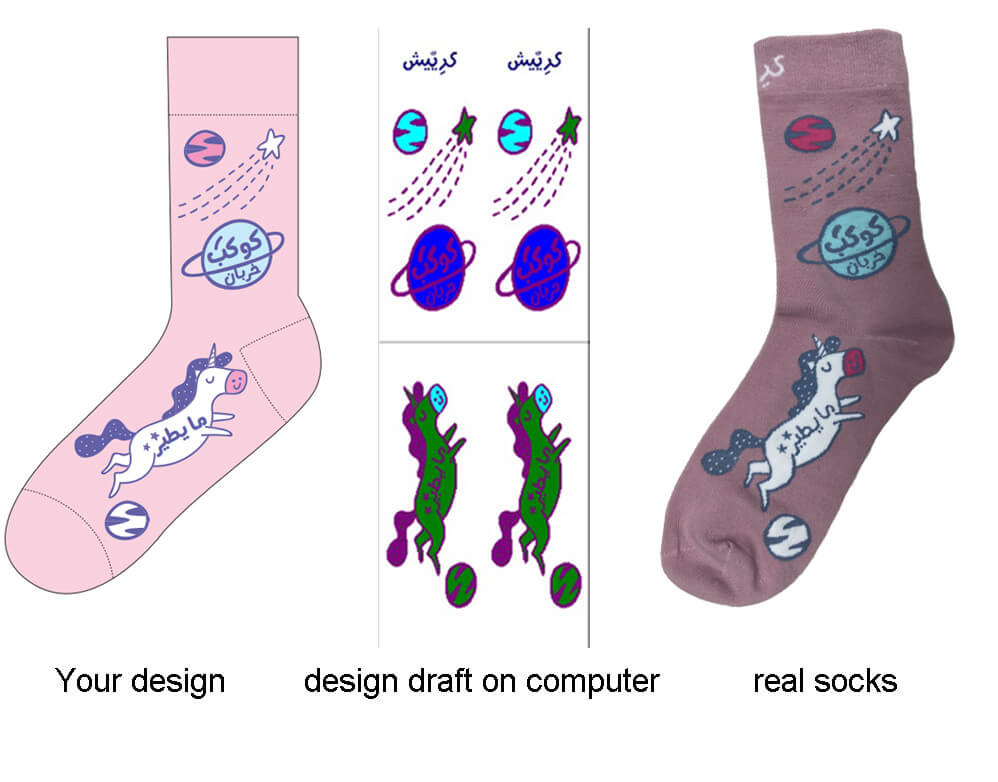
The difference of different needles
So how can we get a better understanding of different needles of socks? Imagine that we put many different sizes of points on a fixed width, so the size of points in small numbers will be larger than the ones in big numbers. This means that under the condition of the same sock width, the higher the number of stitches, the higher the density of the sock, the finer the pattern. Therefore, high needles are generally used for mid to high-end quality socks. The picture below shows a few comparisons of patterns with different needles. We have also mentioned the situation in the previous article, read here if you are interested.
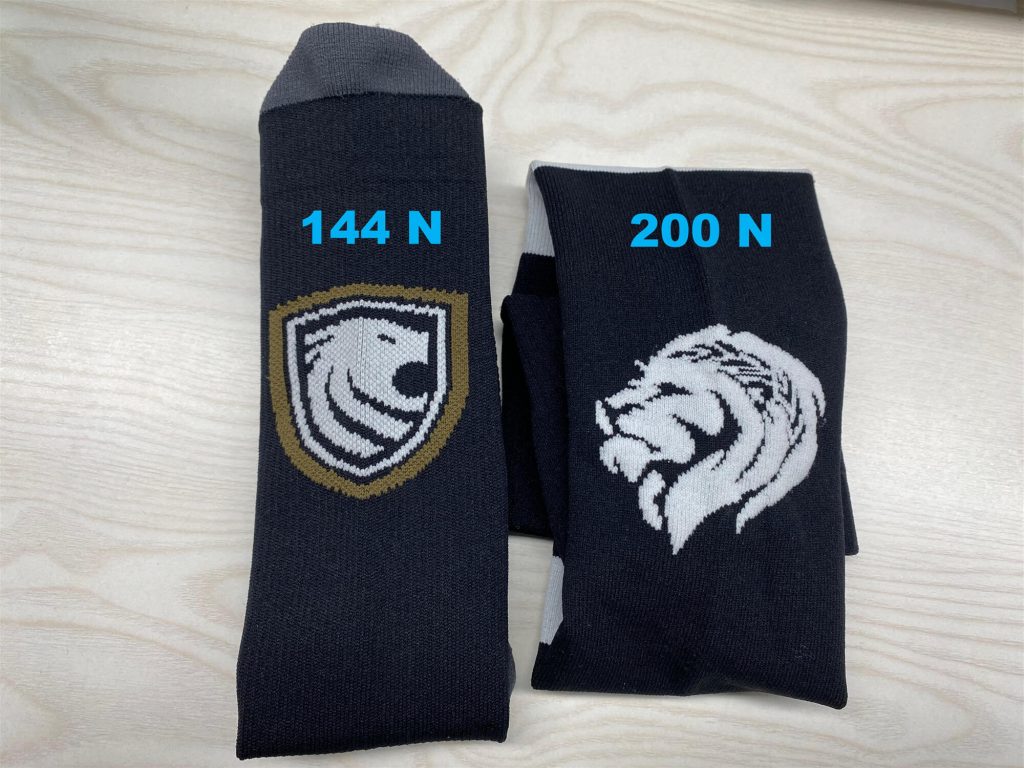
What will the needle affect
Generally, the sock needle will affect below things:
1. Pattern
As mentioned above, the higher the needle count, the finer the pattern. Therefore, the complex pattern needs to be achieved through a high number of needles.
2. Density
The needle is only factor that affects the density of a sock. Under the same raw material condition, if we use the different needles, the sock density will be somewhat different. This is also the reason why sometimes you receive a sock while it looks a bit see-through. Below picture for comparison.
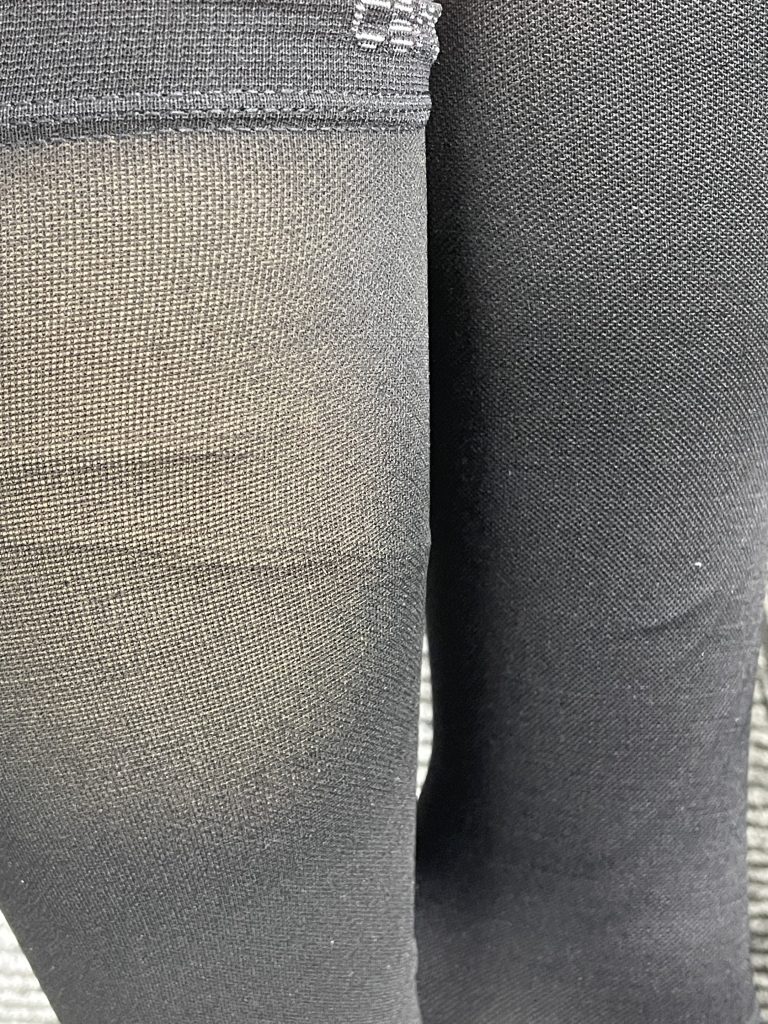
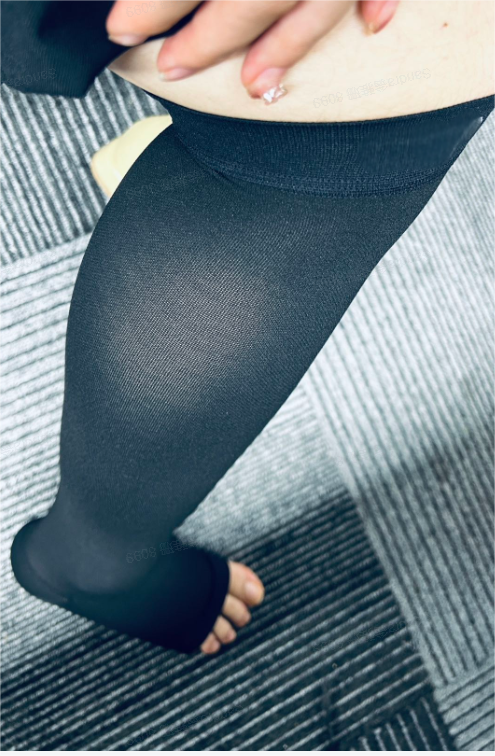
3. Price
Under the same specification, the weight of socks made with high needle stitches will increase, so the price will rise accordingly.
Conclusion
Hope this article can help you understand better about the needle and learn which needle is better for your socks. Here we also have an article about the different techniques of the logo on socks. Any inquiries about socks, please feel free to contact us -- Jiaxing Max Hosiery, a leading manufacturer of sports and compression socks in China. Our mission is, customers first always!
FAQ
1. What are the main types of needles used for knitting socks?
Sock knitters primarily choose between two tools: Double Pointed Needles (DPNs) or circular needles. With DPNs, you work across a set of 3 or 4 short needles. With circulars, you typically use a long cable to knit a small circumference using the "Magic Loop" technique.
2. What is the standard needle size for a typical pair of socks?
For socks made with traditional fingering-weight yarn, the most common needle sizes range from US 1 to 3 (2.25mm to 3.25mm). This small diameter creates a tight, dense fabric that is both comfortable and durable enough to withstand wear. Always check your pattern's recommended gauge.
3. If I use Double Pointed Needles (DPNs), what length is best?
For socks, shorter DPNs are much easier to handle. A length of 15cm (6 inches) is the most popular choice, as it’s long enough to hold the stitches securely without being awkward or getting in the way as you knit in a small round.
4. What size circular needle should I get for knitting socks?
If you plan to use the Magic Loop method, an 80cm (32-inch) or 100cm (40-inch) cable is ideal, providing plenty of flexibility. Alternatively, you can use a dedicated short 23cm (9-inch) circular needle, which allows you to knit continuously without adjusting cables, though some find it cramps their hands.
5. How many needles do I actually knit with when using DPNs?
You will typically use a set of five DPNs. Your stitches are distributed across three or four of these needles to form the circle, while you use the fifth (empty) needle to do the actual knitting. The choice between using three or four holding needles is simply a matter of personal preference.
Follow us below:
